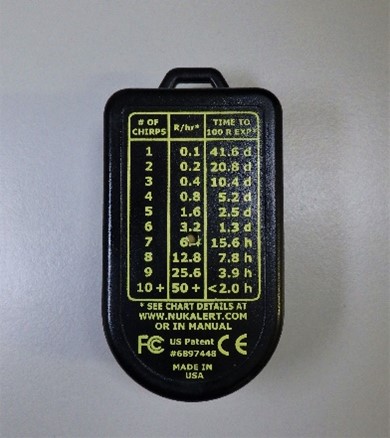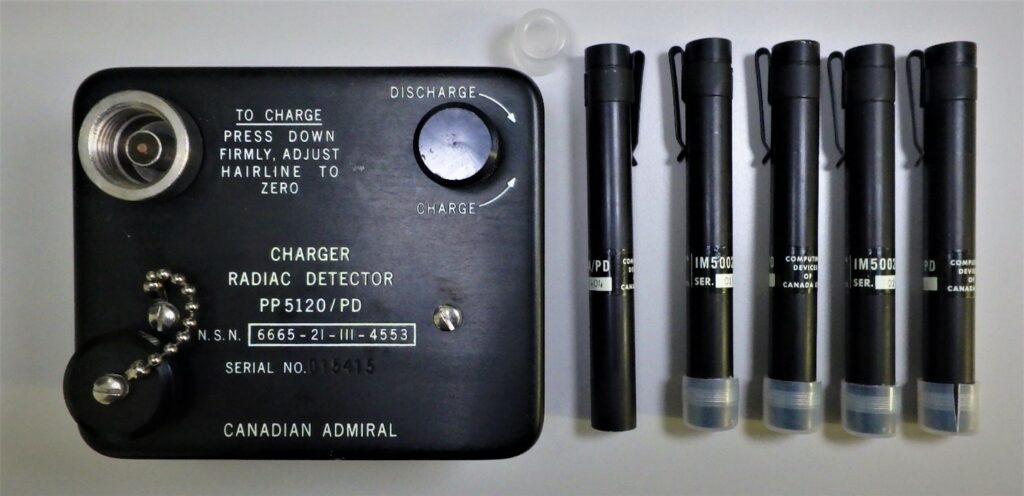[ad_1]
For a generation and a half, young people have lived their lives free from the specter of nuclear attack. People were not compelled to contemplate the horrors of nuclear war and how they would survive a nuclear blast or fallout, what food would be safe to eat or drink, or whether the air would be safe to breathe.
Unfortunately, the U.S.A. has scant preparations to protect its citizens from nuclear attack. While politicians have gone to great lengths to ensure the continuity of government, there are no fallout shelters for common citizens, only advice and plans to build your own.
You could build and stock a fallout shelter and there are ways to inexpensively improve the protection factor any building already provides, but the average American spends over a third of their workday away from home. What could you possibly carry with you during your day that would improve your chances of survival if a nuclear weapon is detonated on U.S. soil?
How Would You Know a Nuclear Attack Has Occurred Elsewhere or is Imminent?
Who attacks the U.S., what their objective is, what nuclear weapon systems they have at their disposal, how many they use, and how they deliver them, would all affect how much notice there is or whether there is any notice at all.
A nuclear attack by a nation state with a nuclear arsenal and a space program would likely begin with a HEMP attack to blind our radar, take out much of out command and control and cripple our power grid. We may not see such an attack coming at all, much less in time to do anything about it or warn the populace by issuing a warning via WEAS (the Wireless Emergency Alert System). Nuclear weapons optimized for HEMP are probably orbiting the earth in satellites as you read this. Here is a link to a previous article of mine on how to tell if an EMP has happened.
Even if the federal government could warn the citizenry of such an attack, I doubt that they would. Their reasoning being, “Why cause panic and clog the roads and airports and prevent the almighty brass, politicians, and bureaucrats from getting safely to their shelters?” What good would it do to tell the average citizen anyway? Afterall, in their eyes, we are all helpless, defenseless, and utterly dependent on them in every way.
Most of them probably couldn’t care less whether the tiny fraction of the population who is prepared makes it to their fallout shelters or not. They are afraid of us and see us as more of a problem than an asset.
Radiation Meter
You can’t see, hear, smell, taste, or feel ionizing radiation. It can only be detected with specially designed instruments, such as a radiation meter. Without one, you won’t know whether it is safe to stay where you are or whether staying where you are means certain, and very painful, death.
If your local emergency services have radiation detection equipment, have had it calibrated at the proper interval, know how to use it, are able to broadcast measurements to the public, and you are able to receive their transmissions, then you’ll know the severity of radiation exposure inside or outside the fire station or wherever they took, their measurements. You need to know how intense the exposure is where you and your family are sheltered so you don’t die… terribly. Once you are home, you’ll also need to know the intensity of exposure outside to know when it’s safe to go outside.
If HEMP effects have damaged the power grid and radio stations, using radiation detection equipment will likely be the only way to know if you are safe where you are or whether you need to get to someplace safer.
I carry a small radiation monitor and alarm called the NUKALERT that is designed to be carried on a keychain. This radiation monitor is always on and constantly samples about every two seconds and has a battery life of 10+ years.

The monitor produces a series of beeps when radiation is detected. By counting the number of beeps and referencing the chart on the back of the device, you can quickly calculate how long you have to find, improvise or improve shelter.
Cellphone, Small Amateur Radio with Wide Band Receiver
If there is any warning preceding a nuclear attack and the government does warn the public, then you may receive an alert on your cellphone. However, if the nuclear attack is preceded by a HEMP attack, it is likely that your cellphone may not work.
If your local emergency responders have their act together, they will break out their radiation meters, take readings and report them for broadcast to the public so folks can know whether they need to seek shelter or whether it is safe to be outside. Of course, their ability to get this information out to the public may be degraded if the power grid is down, cell towers are down, and radio stations are down. But do not fear, before long, radio operators will soon get radio back up and transmitting.
The beauty of radio is that you only need a transmitter and receiver to get the word out and they can run on batteries so little infrastructure is needed. That’s why it’s a shame that several auto manufacturers are trying to build vehicles without AM radios. No other technology would reach as many people as quickly in a catastrophic event that takes down the power grid.
Some amateur radios with wide band receive can also receive AM, FM, and shortwave frequencies, giving you the ability to receive broadcasts in addition to monitoring local amateur radio traffic and potentially communicating with family and friends even if phones, SMS, the internet, and the grid are all down.
Faraday Bag
Most handheld transceivers are well shielded and may work even after a HEMP depending on many factors. If radios weren’t well-shielded, they would damage their own circuits when they transmit. You can greatly improve the odds of having a working radio and/or cellphone by storing it in a non-conductive bag and then storing that inside a Faraday bag.
Some tests indicate that many handheld transceivers would likely survive a HEMP with a field strength at or below 50kV/m. However, it is possible that super-HEMP weapons may generate much higher field strengths (Russian military literature references field strengths of up to 200kV/m), so storing sensitive microelectronics you may need to survive in a Faraday pouch that provides at least 73dB of shielding is a reasonable and inexpensive protective measure. It might not protect sensitive electronics if the weapon went off directly above you, but it would improve your chances in much of the rest of the country.
Dosimeters
A dosimeter measures how much radiation you have been exposed to over a given period. This is important to know and, if you have the money, this greatly simplifies tracking. Ideally, each member of your group should have their own dosimeter.

You don’t need to carry the charger constantly, but you will need it to periodically zero dosimeters as gamma rays pass through the ionization chamber, bleeding off the charge at a measured rate. To read them, you hold the tube up to a light source and look through it. If you buy these old surplus dosimeters, you’ll need to have them tested and calibrated.
Watch, Notebook, & Pen
If you only have a radiation meter and don’t have a dosimeter, you’ll need to record the total REMs you have been exposed to and over what period of time. If you have older analog dosimeters that look like pen, they only record exposure within a specific range. You must record when you charge them, how much radiation you have been exposed to, over what time period, and then they need to be recharged and zeroed.
Even if you have a newer digital dosimeter that tracks your total exposure, I recommend making a copy of the exposure scale so you will know how many REMs you and others in your care can be exposed to before they become ill and how many are fatal. This information may help you make important decisions, such as when you really shouldn’t spend any more time outside the shelter, when you need to try to move someplace safer, when you are safe and when it’s time to get your affairs in order.
Potassium Iodide
If you receive notice that a nuclear attack is eminent, you should begin taking potassium iodide. One of the effects of exposure to fallout is that radioactive isotopes of iodine can build up the thyroid gland increasing the risk of thyroid problems, tumors, or thyroid cancer.
When unpredictable winds caused a little over 60 indigenous inhabitants to be exposed to fallout during nuclear testing in the Bikini Atoll, approximately one third of them eventually developed thyroid problems, tumors, or cancer over the next 20 years.
Outerwear & PPE
If there is a chance that you may be directly exposed to fallout before are able to get someplace safe or improvise shelter, protect yourself as best you can.
- Lightweight Outerwear – Lightweight outerwear is no substitute for a fallout shelter, but it can keep fallout particles from sticking to your skin and help ensure that they they do not stick to you during the decontamination process. Outwear with a zipper is best. You don’t want to contaminate your head and neck by pulling of you top over your head.
- Gloves – Gloves will help protect your hands.
- Hat – A hat will help keep fallout particles off of the head and out of the hair, where they can be difficult to remove. When you wash, use tepid water and do not use conditioner which will cause particles to bond to proteins in your hair.
- Eye Protection – Because your eyes are moist, fine particles can stick to them and eyte protection can help prevent this.
- N95 Mask – Fine fallout particles can be inhaled and ingested, and they are far more damaging once inside the body. Fortunately, the largest and most dangerous particles drop out of suspension the fastest.
[ad_2]
Source link
Get more stuff like this
in your inbox
Don't Be Left Unprepared
Thank you for subscribing.
Something went wrong.





